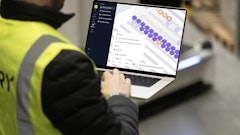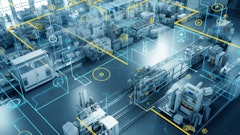
Over the last decade, manufacturers have embraced what became known as Industry 4.0, a transformative era that introduced automation, AI, and digital systems to the factory floor. Robotic process automation took over repetitive tasks, connected tools gave us real-time insights, and operations became faster and more efficient than ever before.
Fast-forward to today, a new shift is already underway. Industry 5.0 calls for manufacturers to think beyond automation and refocus on how humans and technology can work together in a more balanced, intentional way.
That shift means rethinking how you train, hire, and support our workforce. It’s not about keeping pace with the next big advancement, but instead making sure the people behind it are just as empowered as the advanced technology they’re working with. This is the path forward, and manufacturers who take it will drive the next era of growth and resilience.
Defining Industry 5.0
So, what is Industry 5.0? Coined by the European Union, the next era of manufacturing is defined by human-centricity, sustainability, and resilience. Rather than focusing on emerging technologies, Industry 5.0 puts people back at the center of operations by fostering a partnership between human expertise and the accuracy and consistency of modern machines. It shifts the industry’s sentiment toward leveraging AI and automation to support and elevate human decision-making, instead of relying on it entirely.
In terms of sustainability, it's about firms becoming more aware of their environmental impact and using smart tools to operate more efficiently and responsibly. When it comes to resilience, manufacturers are recognizing the importance of scenario planning, digital infrastructure, and supply chain adaptability. This has been forefront for many manufacturers this year, particularly as the shifting tariff policies continue to test the limits of outdated systems.
These pillars are crucial in understanding how Industry 5.0 builds upon the progress made in Industry 4.0, and why this shift marks a turning point for modern manufacturing. Expanding on past innovation means manufacturers can’t afford to overlook the human workforce. With the silver tsunami, the mass retirement of skilled, experienced workers is quickly approaching, and ongoing labor shortages and high turnover already straining operations, the pressure is on. It’s the next generation of workers who will carry this industry forward, and it's up to manufacturers to meet them where they are, give them the tools they need, and build a future they want to be part of.
Preparing the workforce for the next era of manufacturing
Industry 5.0 doesn’t require manufacturers to start from scratch; firms just need a smarter approach. From hiring practices to internal training, there are practical ways to build a more resilient workforce—one that’s prepared to grow alongside the technology shaping it.
One of the most important areas to revisit is how you hire. Too often, manufacturers prioritize experience and overlook younger generations with adaptability and tech fluency. That’s a missed opportunity, especially as the industry prepares for a generational shift. In 2024, the U.S. Bureau of Labor Statistics reported that 26% of the manufacturing workforce is aged 55 or older, and many of them will retire within the coming years.
However, hiring younger talent is only half the equation. Employee retention is key for efficient manufacturing operations, but turnover remains highest among Gen-Z, many of whom are reportedly likely to leave during the first 90 days. That signals a clear workforce gap: once you bring in the next generation, you need to support them with meaningful onboarding, training, and development. Manufacturers that want to stay ahead need to think holistically about how they grow the talent that will carry the industry forward.
Technology can help close that gap as it has become a critical tool in supporting training programs. It simplifies knowledge-sharing and can help in cross-training employees and filling knowledge voids left when experienced workers retire. Think about your most seasoned technician. If they retired tomorrow, would your team be ready? If not, now’s the time to capture what they know and rework your processes so your business can preserve institutional knowledge. Upskilling your existing team to work with automation, AI, and data systems also allows firms to do more with fewer hands and drive productivity.
At the same time, manufacturers need to reframe how employees think about automation. Many frontline workers fear that AI is here to replace their roles, when in reality, it’s here to support them. AI is not going to take over the world, but the people who know how to use AI will. When used mindfully, it enables teams to scale their impact without burning out.
Putting Industry 5.0 into practice
The AI-in-manufacturing market is expected to skyrocket from $5.12 billion today to more than $132 billion by 2034. That kind of growth sends a clear message to manufacturers: technology adoption is happening now, and those who want to remain competitive must commit to AI integration as part of their broader workforce strategy. If you don't, someone else will, and they’ll be setting the industry standards before you can catch up.
In dozens of conversations with manufacturing C-suite executives, one theme keeps coming up: they don’t know where to start when adopting AI. That uncertainty is why it's important to take the first steps now. Here are four practical, people-centered strategies to help manufacturers embrace the next phase of innovation:
Understand where you stand: Every smart operation begins with data. Start by looking at your workforce and identifying knowledge gaps. Which valuable team members are retiring soon, and what do they know that others on your team don’t?
Use this insight to prioritize internal training, succession planning, and knowledge transfer strategies. AI tools can support this effort by organizing workforce data and helping spot trends or vulnerabilities before they become problems.
Audit your current technology: Once you have a clear picture of your team, evaluate your existing tools. What systems are currently in place, and are they helping or hindering your people? Where do manual processes slow things down?
You don’t need to reinvent your digital infrastructure overnight. Small steps, such as updating outdated tools, modernizing ERP platforms, or adopting cloud-based systems, can create space for better efficiency.
- Start small with AI: Begin with low-risk, high-impact areas like quoting, reporting, onboarding, or document generation. Tools like Microsoft Copilot or ChatGPT can help your teams save time and reduce errors without major investments. Start with one project, measure the impact, and then you can expand AI initiatives from there.
- Turn data into action: Many manufacturers already collect large volumes of operational data, but few are fully using it. Consider building a basic dashboard that makes performance metrics visible across teams. Empower employees to use this information in real time to guide decisions on production, inventory, or scheduling. This way, you’re eliminating disjointed systems that slow teams down. From there, a clear technology roadmap can help teams prioritize what matters most. Data becomes powerful when it’s not just collected, but embedded into every level of decision-making.
Manufacturers have a chance to lead and regain control of their operations. Taking these steps today will lay the foundation for a more resilient, people-driven future tomorrow.
















